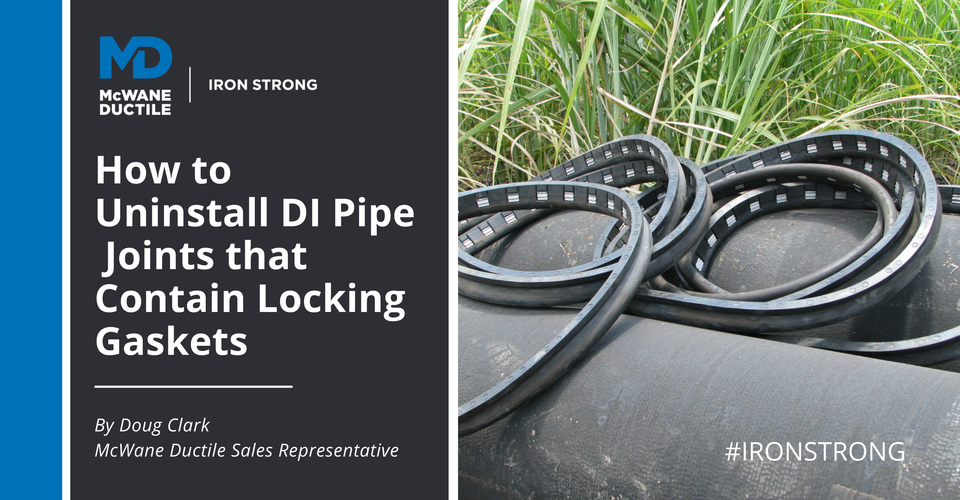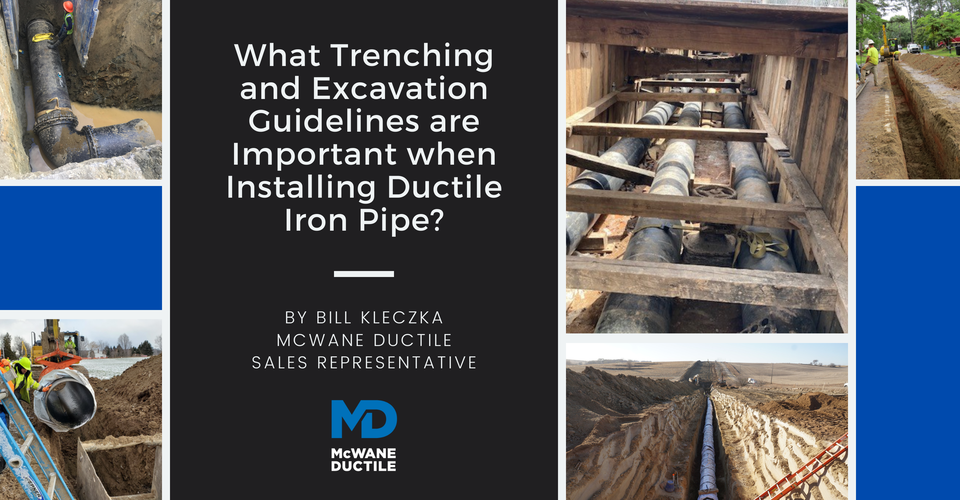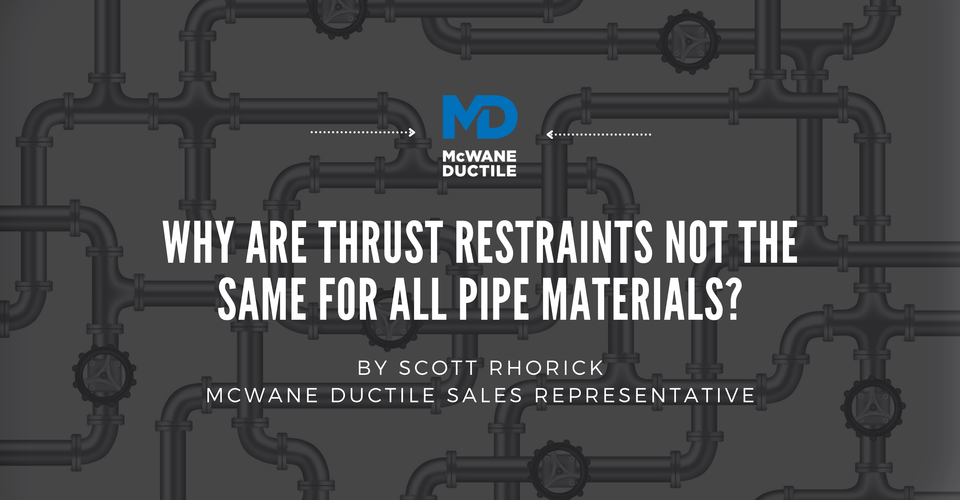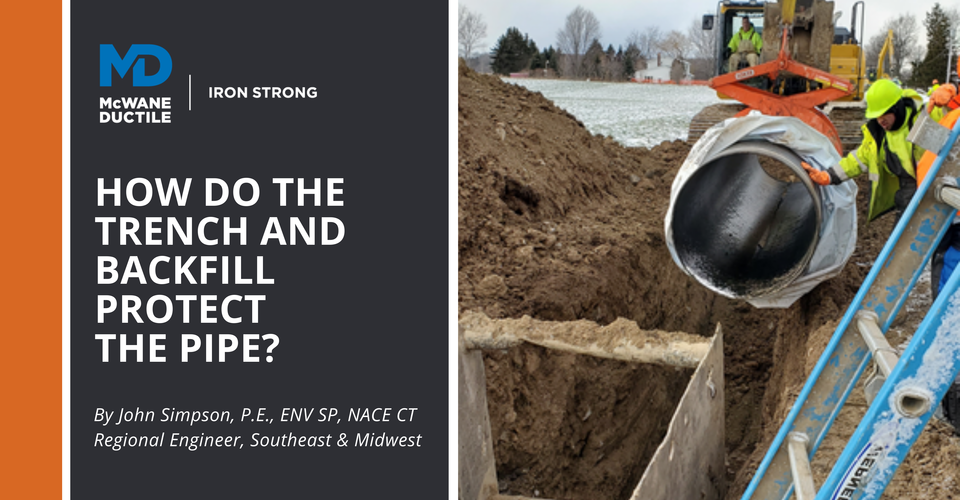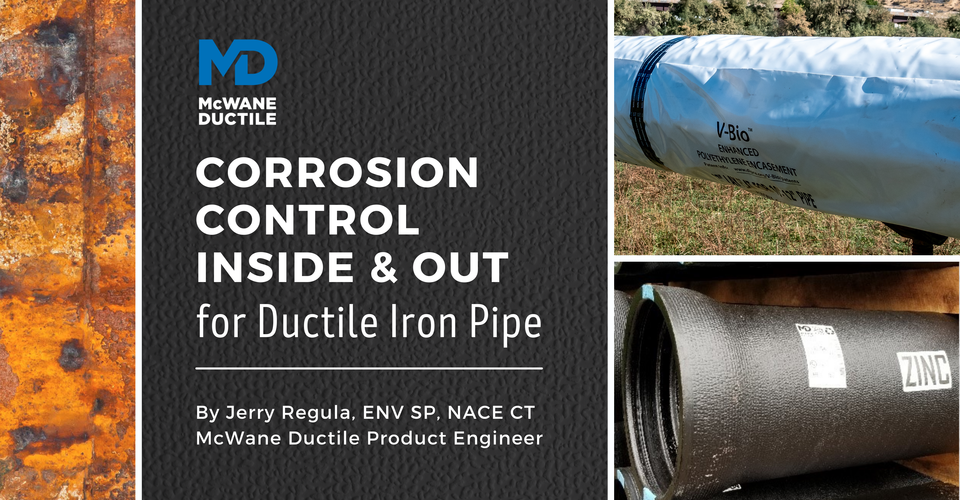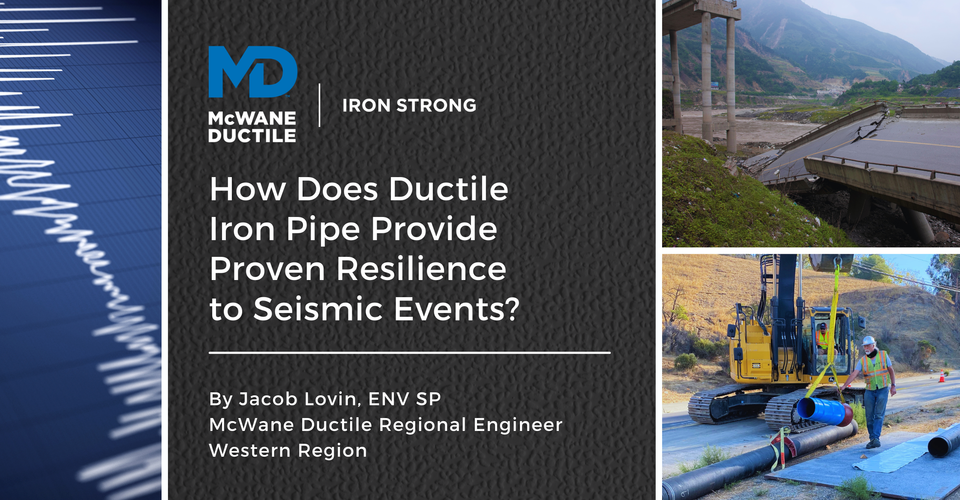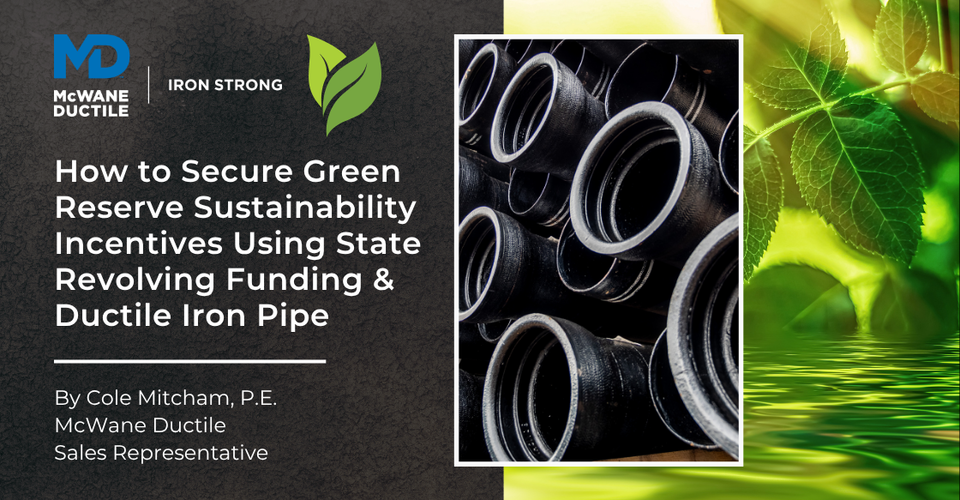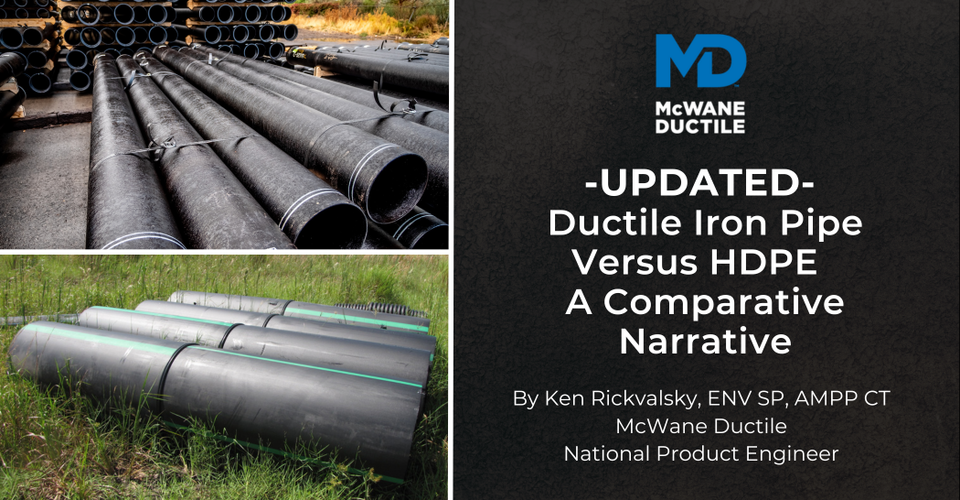-
How to Uninstall Ductile Iron Pipe Joints that Contain Locking Gaskets
01/27/2022 In Installation Products TechnicalHave you ever been on a Ductile iron pipe (DI pipe) installation with restrained joint gaskets and needed to uninstall a previously assembled joint? This is normally prompted by the need to replace a displaced or a “pinched” gasket. Proper gasket placement and attention during assembly is the best way to avoid such conditions, as detailed in a previous blog by McWane Ductile. Unfortunately, the problem often does not arise until the pipeline is hydrostatically tested. In today’s Iron Strong Blog, we will examine the “Dos & Don'ts" of uninstalling with DI pipe restrained joint gaskets.
-
What Trenching and Excavation Guidelines are Important when Installing Ductile Iron Pipe?
01/07/2022 In Environmental & Safety InstallationHave you ever been asked what size trench is needed when installing Ductile iron pipe (DI pipe)? How safe are the working conditions within a trench? Knowing the proper trench to utilize during the installation of the material will help save time, effort, and money on any job site. But most importantly, this knowledge will help keep everyone safe within and around the trench. The Occupational Health and Safety Administration (OSHA) has gone to great lengths to define and identify any threats in the trenching and excavation safety when installing DI pipe. This Iron Strong Blog will share and explain the different trenches available while outlining the safety considerations required when excavating earthen material.
-
What Are the Three Pipe Tapping Methods?
12/27/2021 In Products TechnicalSo, you have an existing water distribution system feeding a small hospital and a military post. Now you need to branch off the pipeline to feed another 30 new houses under construction nearby. How do you do it without interrupting service to the critical facilities already being served? In this Iron Strong Blog, we’ll discuss three common pipe tapping methods used in the water and wastewater industry and the variables to consider when choosing the best method for your waterworks project.
-
Why Are Thrust Restraints Not the Same for All Pipe Materials?
12/13/2021 In Products TechnicalIn today’s marketplace, everything is in constant flux. Projects have specific completion times, and material lead times are continually increasing. For a variety of reasons, materials that typically were in stock for immediate shipment now take weeks to months before they are available to ship. You may be considering changing the piping material to be used in your water line project to another type of material. A significant consideration is how each type of piping material requires different lengths of restraint to control the change of direction in the line.
-
How Do the Trench and Backfill Protect the Pipe?
12/02/2021 In Installation TechnicalUtility pipelines provide for some of the most basic needs within our society. Essential services, such as supplying potable drinking water to our homes and businesses or sending wastewater away, are possible because of a network of buried pipelines. Whatever pipeline materials are used, they are expected to meet minimum service qualities such as withstanding leakage. This resiliency to leakage eliminates waste of our precious drinking water and prevents polluted soils from wastewater in the pipeline's proximity.
-
Why Is Using the Right Design Criteria Important in Calculating Restraint Requirements?
11/19/2021 In Installation TechnicalWhen I first started my engineering career, I was placed in charge of coordinating the relocation of water transmission and distribution pipelines to accommodate the construction of an interstate highway through a city of approximately 180,000 residents. Many times, these projects required pre-poured thrust block restraints due to the amended connections between new and old waterlines in a short timeframe so as not to leave customers inordinately out of water for long periods of time.
-
The Iowa Treated Water Pipeline Project: Providing Growth with Safe, Clean Water
11/09/2021 In Installation ServicesShallow aquifers prone to contamination, compliance with federal drinking water standards, and insufficient resources to replace aging infrastructure. These are some of the water issues that launched the creation of the Lewis & Clark Regional Water System and the construction of the Iowa Treated Water Pipeline – Segment 3.
-
Hydrotesting on Slopes: The Hills Have PSI!
10/28/2021 In Installation TechnicalDear Ditch Doctor: Out here in the western United States, we wind up with a lot of pipelines installed up or down serious hills, dare I say mountains as well? We are good at the construction part, yet time after time we struggle with getting a satisfactory post-installation hydrostatic test on the pipeline, especially with inclined installations. Often the pipeline drops anywhere from 20 to 50 psi on the gauge and can do that several times or more until we take some sort of drastic redo/restart on the test procedures.
-
Barrel Rating vs. Joint Rating for Ductile Iron Pipe: Is There a Difference?
10/15/2021 In TechnicalWhenever the word "rating" is used regarding Ductile iron pipe (DI pipe), a 100-psi surge allowance and a safety factor of 2.0 are consistently included for all wall classes. This leads to conservative yet versatile designs for the long-term performance of utility pipelines of all kinds in various or changing conditions. Hence the basic universal rating for DI pipe is 350-psi which equates to a minimum of 900-psi of hydrostatic pressure containment within the pipeline.
-
Corrosion Control - Inside and Out - for Ductile Iron Pipe
10/08/2021 In Products TechnicalWhen it comes to water system project design, there are many factors to consider when utilizing Ductile iron pipe (DI pipe). One of the most important is corrosion prevention, and if correctly addressed, there are great opportunities to design your systems with projected life spans extending well beyond 100 years.
Latest Posts
- Can Joining Water Works Industry Organizations Help You Grow Professionally? 10/21/2025 In Careers WaterWorks
- How Does Ductile Iron Pipe Provide Proven Resilience to Seismic Events? 09/04/2025 In Products Resiliency Technical
- How to Secure Green Reserve Sustainability Incentives Using State Revolving Funding & Ductile Iron Pipe 07/29/2025 In Energy Products Technical
- UPDATED - Ductile Iron Pipe Versus HDPE - A Comparative Narrative 05/29/2025 In Comparisons Products Technical

